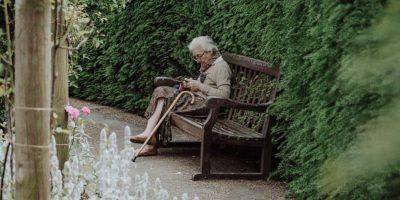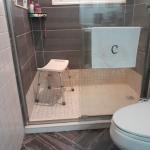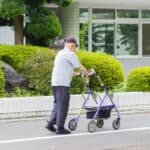We saw this one catching up as the years rushed past. Suddenly, it seemed more people our age were using walking sticks and rollators. Then we saw an elderly person with a broken leg in a wheelchair. If falls are a consequence of growing older perhaps it’s time we learned to avoid them.
A fall usually happens when you lose your balance or something disturbs it. There are things you can do to strengthen your balance and avoid tripping over things. It helps to understand how these things happen.

Statistics of Falls in The Elderly – The Causes and Circumstances
Three quarters of people aged 65 years and older who were hospitalized in 2016 / 2017 had suffered falls. The majority of them were women across all age groups. The fall rate for men and women increased annually by 3% and 2% respectively according to the Australian Institute of Health and Welfare.
The commonest injuries from falls affected heads (26%) and hips and thighs (22%). Head injuries are now twice as likely as they were ten years ago although the report does not suggest reasons.
However it does provide the following information:
- Falls on the same level from slipping, tripping and stumbling caused 34% of hospitalized cases
- Falling from household objects (beds, chairs, steps, stairs and ladders) contributed a further 14%
- Most of these falls happened at home (51%) or in residential care (21%) where details were available
This tells us elders are most likely to fall and hurt themselves in familiar places falling over or / off familiar things they know well. Perhaps that’s why so many of us feel a little embarrassed when we tip over. Our reaction time also slows.
The Longer Term Consequences of Falls
The U.S. National Libraries of Medicine report older adults are more likely to suffer chronic wounds affecting their quality of life after falling. That’s because the rate of healing slows although the causes are not well understood.
The Australian Institute of Health and Welfare says this means initial hospitalization knocks on to specialist facilities for in-patient follow up, and rehabilitation. However, these do not affect the overall fall count as they are tagged ‘admitted patient transferred’.
There were over 13,000 of these patient transfers in 2016 – 2017 in Australia, being 10.4% of the total falls. Women were a third more likely to be affected. The rate of these referrals increased with age across both genders.
There were approximately 127,000 elderly hospitalizations for falls during the period. Of these, almost 30,000 required in-house rehabilitation afterwards. Women accounted for almost two-thirds of these. These treatments were more frequent as women and men aged.
These numbers tell us how a moment of inattention / forgetfulness can result in an accident trauma that can live with us for a long time. We therefore need to understand the risks we face, and how to go about preventing falls.
The Main Risk Factors and Preventing Falls from Happening
Falls often happen when something disturbs our balance and we are unable to recover our poise. Our body’s balance system functions through feedback from our inner ear, eyes, muscles, joints and the brain.
This system may become disordered due to aging, disease, and injury to balance-sensing organisms. If you are experiencing deafness you may find hearing aids improve your ability to walk, stand, and keep your balance.
You may like to try these simple exercises with a person beside to steady you if necessary:
- Stand behind a solid chair grasping it firmly. Raise one foot at a time. After a while you may be able to release the chair for a minute.
- Walk slowly, steadily, and thoughtfully to strengthen your legs so they have the power to support you without falling over.
- Strengthen your lower back and bottom by raising one leg at a time straight back for one second. Repeat fifteen times per leg.
Develop Your Own Fall Prevention Checklist
Are you still reading this? That’s great, because you know from experience when you are most likely to feel your balance going wobbly. Purchase an adjustable walking stick from a drug store with a wraparound hand grip.
Make a point of having it with you at all times, in case you need it for example when getting out of bed. Install grab handles in the bathroom, get a shower chair, add rails at all the steps. But there still one more thing you need to do. Do you remember this list?
- Falls on the same level from slipping, tripping and stumbling caused 34% of hospitalized cases
- Falling from household objects (beds, chairs, steps, stairs and ladders) contributed a further 14%
- Most of these falls where details were available happened at home (51%) or in residential care (21%)
We are therefore most likely to trip over something we do not expect, or forgot about. Make a point of keeping floor areas clear, and putting things away properly after using them.
We hope these tips make it easier for you to manage your balance, and safely move around your home, workplace, and shopping mall with more confidence.

References
- Flinders University: Trends in hospitalized injury due to falls in older people 2007–08 to 2016–17
- U.S. National Libraries of Medicine: Chronic Wound Repair and Healing in Older Adults: Current Status and Future Research
- Balance Disorder: Wikipedia
- How Your Hearing Affects Your Balance: Signia
- Exercises for Seniors to Improve Their Balance: Phillips Lifeline






